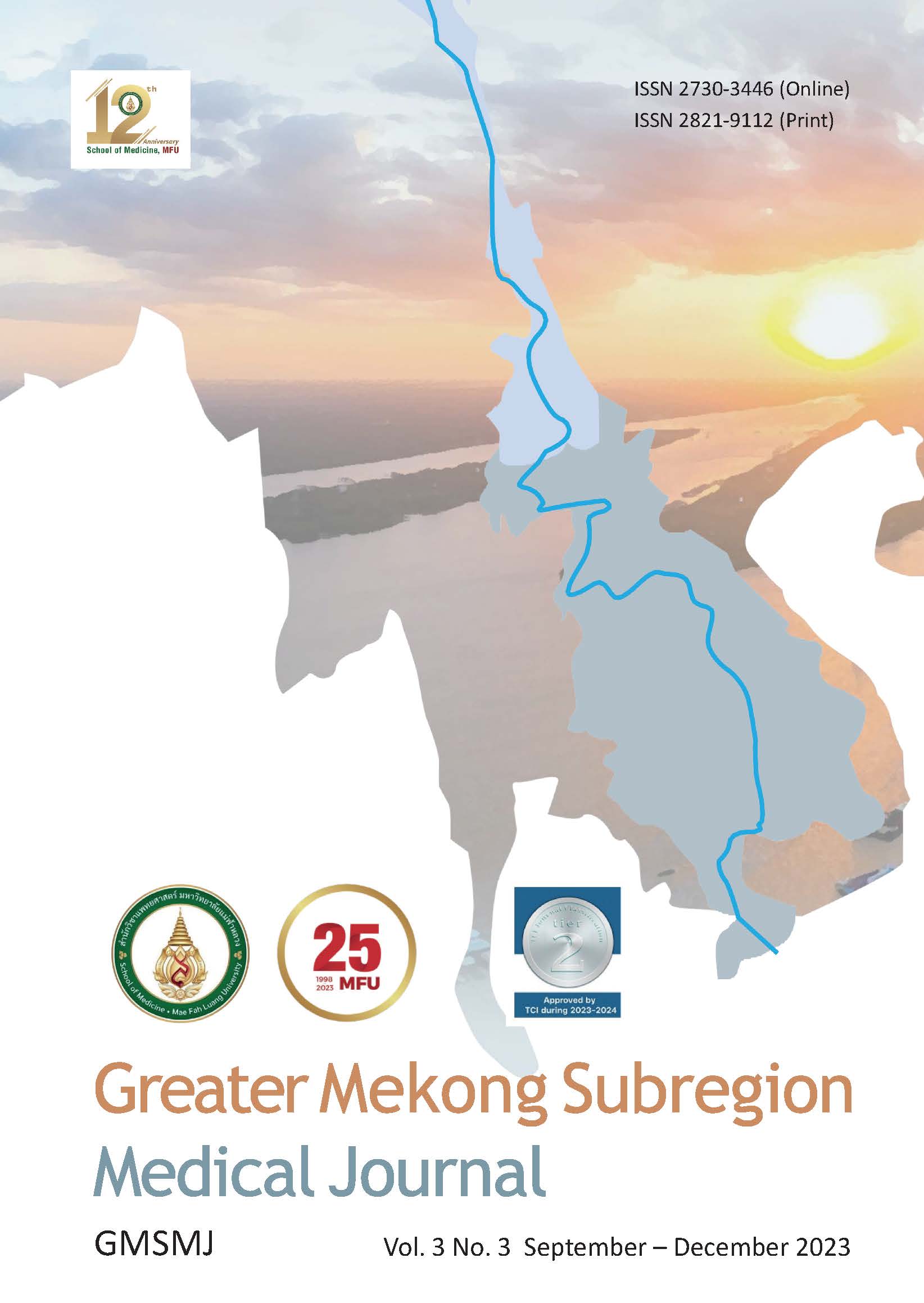Factors Affecting Continuous Follow-up Treatments among Patients Infected with Syphilis at Phramongkutklao Hospital
Keywords:
Syphilis, Continuous follow-upAbstract
Background: In Thailand, there is an increasing rate of syphilis infection and a recent study found that a significant factor of treatment failure and re-infection was due to a loss of follow-up. Therefore, continuous follow-up is crucial for a successful treatment and to control the disease.
Objective: To study factors affecting continuous follow-up treatments among patients infected with syphilis at Phramongkutklao Hospital.
Materials and Method: This is a retrospective cohort study of 111 patients diagnosed with syphilis at Phramongkutklao Hospital from 1 January 2012 – 30 April 2022. The results of demographic data, clinical presentations, serology (VDRL, TPHA), sexual behaviour, treatments and follow-up plans are included.
Results: From the study, factors significantly affecting continuous follow-up treatments included occupations, domiciles, and presenting conditions. Regarding the domicile factor, patients in the Central part were ten times more likely to continue the follow-up treatments than those in the Southern region (P = 0.045). In comparison to patients who got health check-up or donated blood, patients who firstly diagnosed during antenatal care and those with the presence of neurological symptoms were seven times (P = 0.004) and ten times (P = 0.048) more likely to have continuous follow-up, respectively. In addition, the frequency of patients with other occupations was three times more than soldiers and polices (P = 0.018). Interestingly, among patients who continued their follow-up treatments, most medical professionals failed to complete syphilis treatment follow-up guideline.
Conclusion: From this study, potential factors affecting continuous follow-up treatments among patients infected with syphilis included occupation, presenting clinical symptoms, and domiciles. Therefore, these factors should be taken into consideration for the treatment and follow-up plans for patients infected with syphilis.
References
Marcus JL, Katz KA, Bernstein KT, Nieri G, Philip SS. Syphilis testing behavior following diagnosis with early syphilis among men who have sex with men-San Francisco, 2005-2008. Sex Transm Dis. 2011; 38 (1): 24-9. https://doi.org/10.1097/OLQ.0b013e3181ea170b
Phipps W, Kent CK, Kohn R, Klausner JD. Risk factors for repeat syphilis in men who have sex with men, San Francisco. Sex Transm Dis. 2009; 36 (6): 331-5. https://doi.org/10.1097/OLQ.0b013e3181990c85
Data from Bureau of Epidemiology, Department of Disease Control. Ministry of Public Health, Thailand on 17 June 2019.
Kitayama K, Segura ER, Lake JE, Perez-Brumer AG, Oldenburg CE, Myers BA, et al. Syphilis in the Americas: a protocol for a systematic review of syphilis prevalence and incidence in four high-risk groups, 1980-2016. Syst Rev. 2017 Oct 10;6 (1):195. doi: 10.1186/s13643-017-0595-3. https://doi.org/10.1186/s13643-017-0595-3
Luo Z, Zhu L, Ding Y, Yuan J, Li W, Wu Q, et al. Factors associated with syphilis treatment failure and reinfection: a longitudinal cohort study in Shenzhen, China. BMC Infect Dis. 2017;17 (1): 620. doi: 10.1186/s12879-017-2715-z. https://doi.org/10.1186/s12879-017-2715-z
Tang W, Huan X, Zhang Y, Mahapatra T, Li J, Liu X, et al. Factors associated with loss-to-follow-up during behavioral interventions and HIV testing cohort among men who have sex with men in Nanjing, China. PLoS One. 2015; 10 (1): e115691. https://doi.org/10.1371/journal.pone.0115691
Tuddenham SA, Zenilman JM. Syphilis. In: Kang S, editor. Fitzpatrick's dermatology, 9th ed, 2-volume set. McGraw-Hill Education/Medical. 2018: 2636-2663.
Stary G, Stary A. Sexually Transmitted infections. In: Bolognia JL, Schaffer JV, Cerroni L. editor(s). Dermatology: 2-Volume Set. 4th ed. London, England: Elsevier Health Sciences. 2017: 1805- 1825.
Kinghorn GR, Omer R. Syphilis and Congenital Syphilis. In: Griffiths C, Barker J, Bleiker T, Chalmers R, Creamer D, editors. Rook's textbook of dermatology. 9th ed. Hoboken, NJ: Wiley-Blackwell. 2016: 29.3-29.34.
Forrestel AK, Kovarik CL, Katz KA. Sexually acquired syphilis: Laboratory diagnosis, management, and prevention. J Am Acad Dermatol. 2020; 82 (1): 17-28. https://doi.org/10.1016/j.jaad.2019.02.074
Hart TA, Noor SW, Skakoon-Sparling S, Lazkani SN, Gardner S, Leahy B, et al. GPS: A randomized controlled trial of sexual health counseling for gay and bisexual men living with HIV. Behav Ther. 2021; 52 (1): 1-14. https://doi.org/10.1016/j.beth.2020.04.005
Mehta SD, Erbelding EJ, Zenilman JM, Rompalo AM. Gonorrhoea reinfection in heterosexual STD clinic attendees: longitudinal analysis of risks for first reinfection. Sex Transm Infect. 2003; 79 (2): 124-8. https://doi.org/10.1136/sti.79.2.124
Coates TJ, Richter L, Caceres C. Behavioral strategies to reduce HIV transmission: how to make them work better. Lancet. 2008; 372 (9639): 669-84. https://doi.org/10.1016/S0140-6736(08)60886-7
Hughes G, Brady AR, Catchpole MA, Fenton KA, Rogers PA, Kinghorn GR, et al. Characteristics of those who repeatedly acquire sexually transmitted infections: a retrospective cohort study of attendees at three urban sexually transmitted disease clinics in England. Sex Transm Dis. 2001; 28 (7): 379-86. https://doi.org/10.1097/00007435-200107000-00004
Klausner JD, Levine DK, Kent CK. Internet-based site-specific interventions for syphilis prevention among gay and bisexual men. AIDS Care. 2004; 16 (8): 964-70. https://doi.org/10.1080/09540120412331292471
Downloads
Published
How to Cite
Issue
Section
License
Copyright (c) 2023 Greater Mekong Subregion Medical Journal

This work is licensed under a Creative Commons Attribution-NonCommercial-NoDerivatives 4.0 International License.






